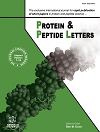
Full text loading...
We use cookies to track usage and preferences.I Understand
With the emergence of the precision medicine era, targeting specific proteins has emerged as a pivotal breakthrough in tumor diagnosis and treatment. Apurinic/apyrimidinic Endonuclease 1 (APE1) is a multifunctional protein that plays a crucial role in DNA repair and cellular redox regulation. This article comprehensively explores the fundamental mechanisms of APE1 as a multifunctional enzyme in biology, with particular emphasis on its potential significance in disease diagnosis and strategies for tumor treatment. Firstly, this article meticulously analyzes the intricate biological functions of APE1 at a molecular level, establishing a solid theoretical foundation for subsequent research endeavors. In terms of diagnostic applications, the presence of APE1 can be detected in patient serum samples, biopsy tissues, and through cellular in situ testing. The precise detection methods enable changes in APE1 levels to serve as reliable biomarkers for predicting tumor occurrence, progression, and patient prognosis. Moreover, this article focuses on elucidating the potential role of APE1 in tumor treatment by exploring various inhibitors, including nucleic acid-based inhibitors and small molecule drug inhibitors categories, and revealing their unique advantages in disrupting DNA repair function and modulating oxidative-reduction activity. Finally, the article provides an outlook on future research directions for APE1 while acknowledging major technical difficulties and clinical challenges that need to be overcome despite its immense potential as a target for tumor therapy.

Article metrics loading...

Full text loading...
References


Data & Media loading...

